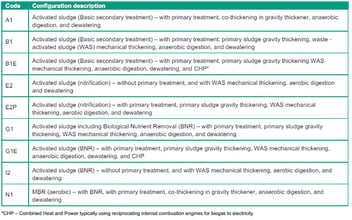Cost-effective hydrogen storage at wastewater treatment plants
Producing and using hydrogen to power wastewater treatment plants is not a new idea, but one construction engineering firm has devised a cost-effective means of repurposing anaerobic sludge digesters to store hydrogen.
Calibre Waste Technology Senior Principal Engineer Jurgen Thiele said ‘green’ hydrogen production (PV, wind) and application as a stored energy source at wastewater treatment plants around Australia is a viable green-energy solution.
“Electricity demands on wastewater treatment plants are not constant but have peak periods during the day," he said.
"Following treatment, many plants repurpose biogas to generate power, offsetting some of the energy requirements for running the plant.
“One way to create high-value peak power is to convert solar energy into hydrogen gas by electrolysis of water. The leftover oxygen can also be used to improve sewage treatment energy efficiency, specifically aeration, and the hydrogen could be stored in low pressure or pressurised storage systems, to be released when the electricity demand on the plant is high.”
It’s often expensive to repurpose hydrogen to create electricity due to the added storage costs, but Thiele said some wastewater treatments plants with existing anaerobic sludge digesters can use existing infrastructure as a hydrogen storage device.
“Often it is expensive to store hydrogen, simply because you may need more hydrogen or have to pay for a means of storage," he said.
"But wastewater treatment plants that already do have bio-digesters, which is the norm in many large plants, can send the additional hydrogen into the digester to turn it into additional methane gas.
“The resident bacteria in the digester will turn CO2 from the biogas into methane gas. The biogas volume remains the same and the methane percentage increases. The hydrogen energy is then stored in the existing biogas storage device."
This means the infrastructure is repurposed in two ways, Thiele said.
“One is the design purpose, the other is creating a potential electricity storage system. The organisms in the digester are trained to do exactly that. About one third of all methane gas in a sewage digester actually comes from hydrogen all the time and the additionally converted H2 is ‘process compatible’.
“We don't have to build hydrogen storage. We just use the existing biogas storage and utilise hydrogen derived power from biogas when we need more power.”
Aside from being more cost-effective, Thiele said the methodology is also beneficial in terms of reducing infrastructure expenditure for wastewater treatment plants.
“It's cheap because most of the infrastructure is already there. It's already there in the treatment infrastructure.
"Why not use it as a benefit to produce hydrogen from sunshine with electrolysis, and still capture the energy without having to pay extra capital costs?”
Related podcast:
https://omny.fm/shows/australianwater/jurgen-thiele-on-a-carbon-neutral-water-industry

